The European Space Agency’s Philae probe became the first human-made spacecraft to land on a comet when it touched down on the surface of 67P/Churyumov-Gerasimenko, also known as the singing comet, on Wednesday. Scientists have already received the first images from the probe, and work has begun on collecting and analyzing material to determine the composition of the comet.
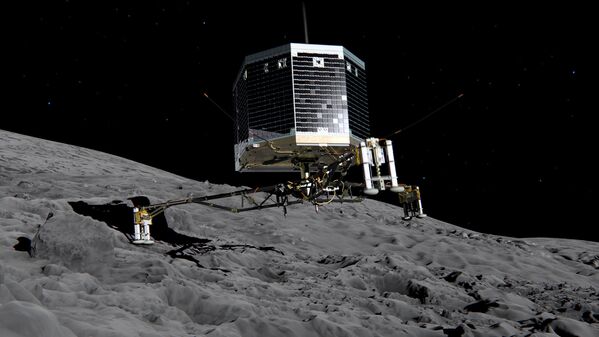
1/14
© Fotobank.ru/Getty Images
The landing of the Philae scientific module on the surface of the 67P/Churyumov-Gerasimenko comet is an event for the history books, believes the European Space Agency’s Director General, Jean-Jacques Dordain. “Our ambitious Rosetta mission has secured a place in the history books,” said Dordain, whose words appeared in the ESA’s press release. Now scientists are “opening a door on the origin of planet Earth and fostering a better understanding of our future,” he added.
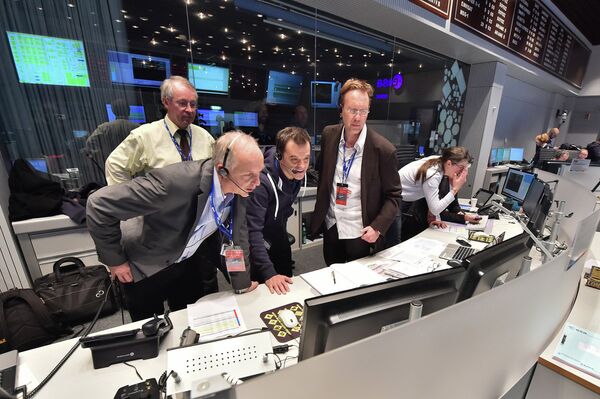
2/14
© Fotobank.ru/Getty Images
The landing was broadcast live from the headquarters of the ESA in Darmstadt, Germany. With the help of the Philae module, scientists plan on studying the comet’s chemical composition.
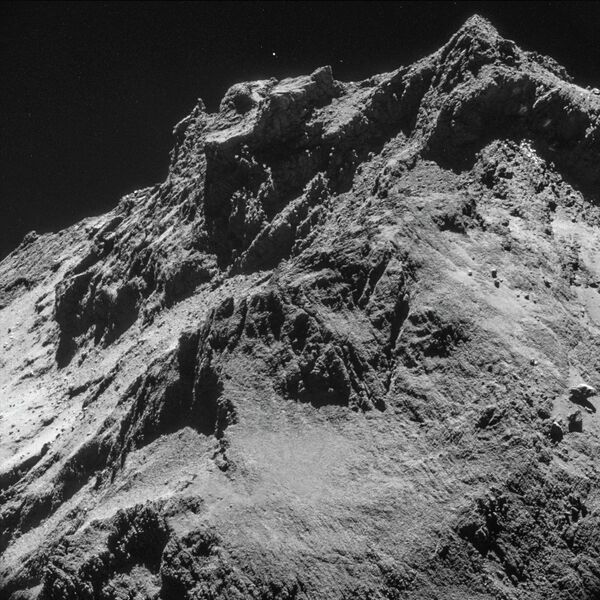
Scientists have obtained the first images of the surface of the Churyumov-Gerasimenko comet, taken by the Philae module upon landing. The first picture was taken during the approach by the module’s onboard ROLIS camera at a distance of about three kilometers from the comet’s surface.
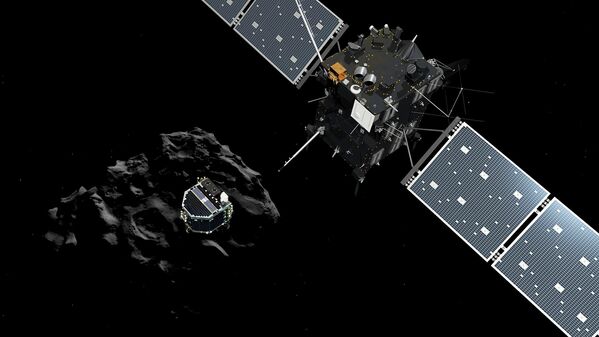
Rosetta photographed the landing module flying to the comet. “I see you too [Philae]! Here you are in my OSIRIS camera –legs out,” the ESA Rosetta Mission Twitter account tweeted.

5/14
© Fotobank.ru/Getty Images
Scientists will use the probe to study the comet’s chemical composition.

6/14
© AP Photo / ESA
A ‘selfie’ of the Rosetta spacecraft. The craft was assembled in a cleanroom – a room where the air was filtered clear of dust, microorganisms, aerosols and chemical vapors. The air’s cleanliness was absolutely vital during the assembly, so that scientists can be certain that any molecules they capture, which could prove to be precursors to life, are actually extra-terrestrial in origin.
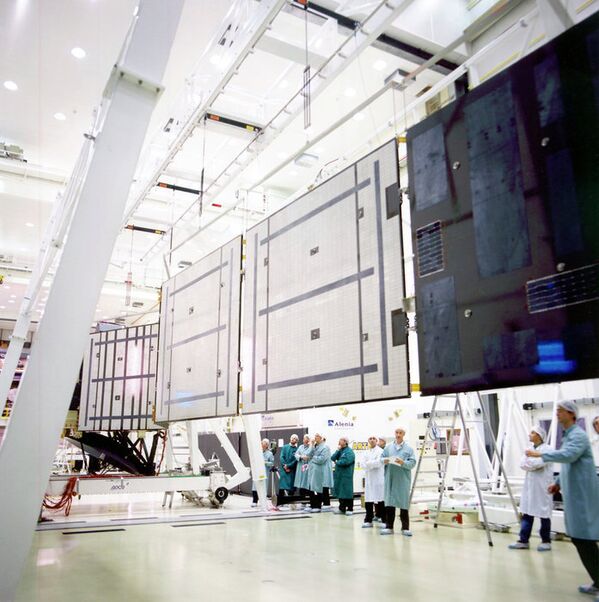
7/14
© Photo : ESA
One of Rosetta’s two solar panel wings. The craft receives electrical energy from two solar cells with a total size of 64 square meters.
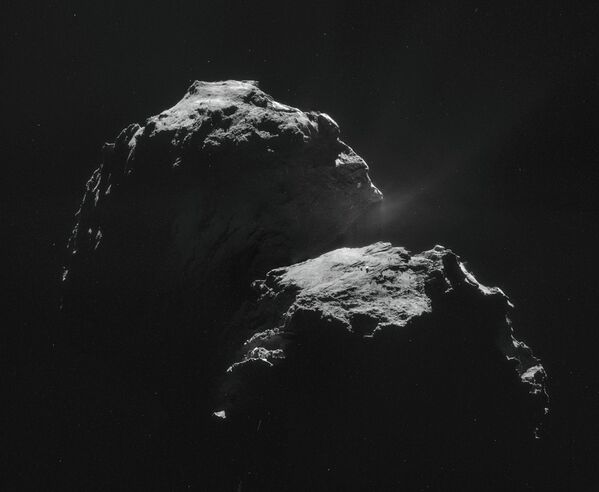
8/14
© Photo : ESA/Rosetta/NAVCAM, CC BY-SA 3.0 IGO
The 67P/Churyumov-Gerasimenko is a short-period comet, orbiting the sun once every 6.6 Earth years. It was discovered on October 23, 1969 by Klim Churyumov at the Kiev Astronomical Observatory, who was studying another nearby comet at the time, the 32P/Comas Sola. The photographic plates were shot by Svetlana Gerasimenko at the Alma-Ata Astrophysical Institute. The dimensions of the comet’s hard surface measure about 3 by 5 kilometers.
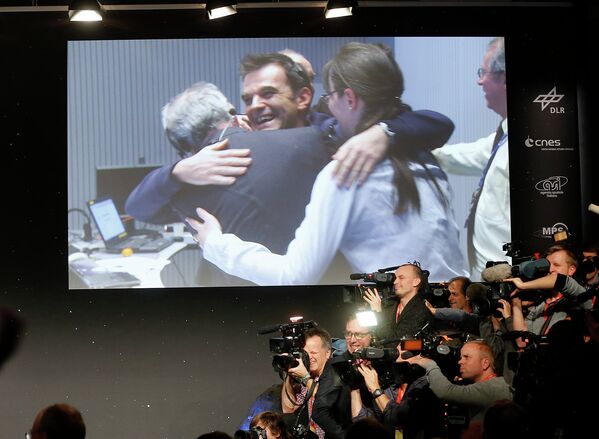
9/14
© AP Photo / Michael Probst
Due to the vast distances between the comet and the Earth, scientists only found out that the landing was successful 28 minutes after it happened.
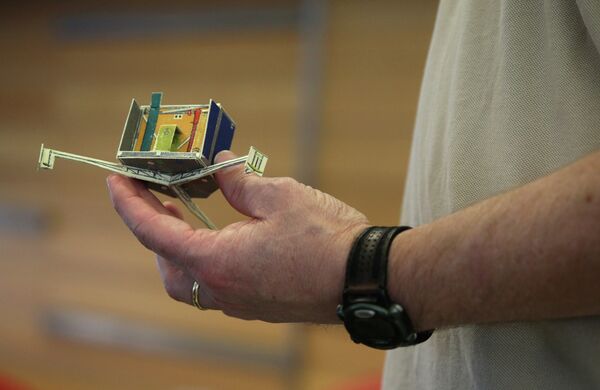
10/14
© Fotobank.ru/Getty Images
A model of the Rosetta spacecraft. The probe is named after the famous Rosetta Stone, a slab of rock inscribed with a decree issued by King Ptolemy V of Egypt, appearing in three languages –Egyptian hieroglyphs, Demotic, and Ancient Greek. Comparing the texts on the Rosetta Stone, scientists were able to decipher Ancient Egyptian hieroglyphs. Now with the help of the Rosetta space probe, scientists hope to discover how our Solar System looked before the planets were formed.
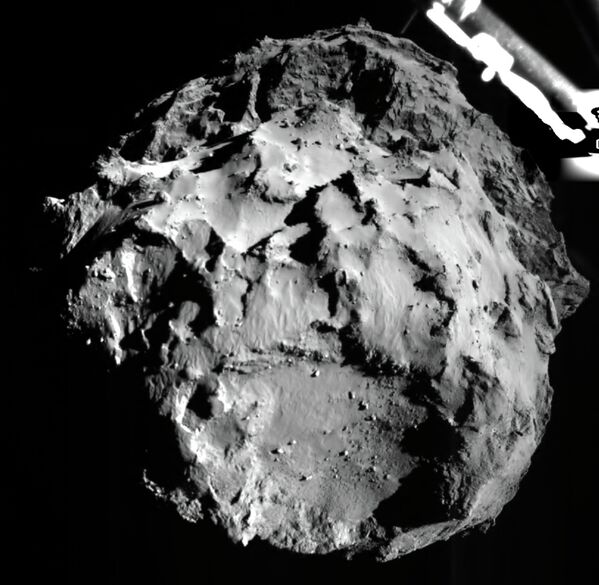
Scientists await valuable data from three instruments created by NASA on board the Rosetta; the instruments will create a map of the comet, and examine if there are any signs of the presence of water on its surface.
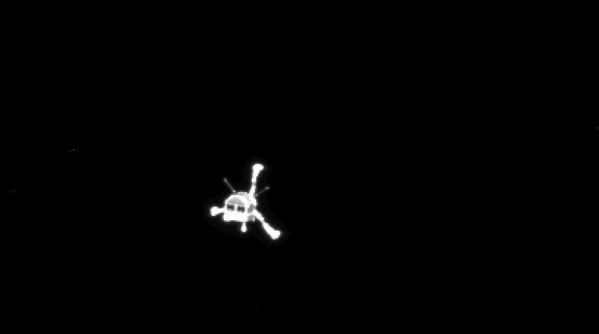
12/14
© Fotobank.ru/Getty Images
Photos by the Philae model after its successful detachment from the Rosetta spacecraft.

13/14
© AP Photo / Jacques Brinon, Pool
French President Francois Holland and Claudie Haignere, an astronaut from France’s space agency, the Centre National d’Etudes Spatiales, watch the Rosetta mission, November 12, 2014.

The Rosetta probe was launched into space over ten years ago, in March of 2004. Moving along a complex orbit around the Sun, the probe approached the orbit of Jupiter after flying around Earth several times, and then around Mars, which helped propel the craft toward the comet’s orbit. From June 2011 until January 2014, the spacecraft was placed in hibernation, with a large portion of its on-board equipment turned off. The craft’s ‘alarm clock’ successfully worked, and the on-board equipment was turned on once again in January. The craft entered the orbit of the Churyumov-Gerasimenko comet in September.

